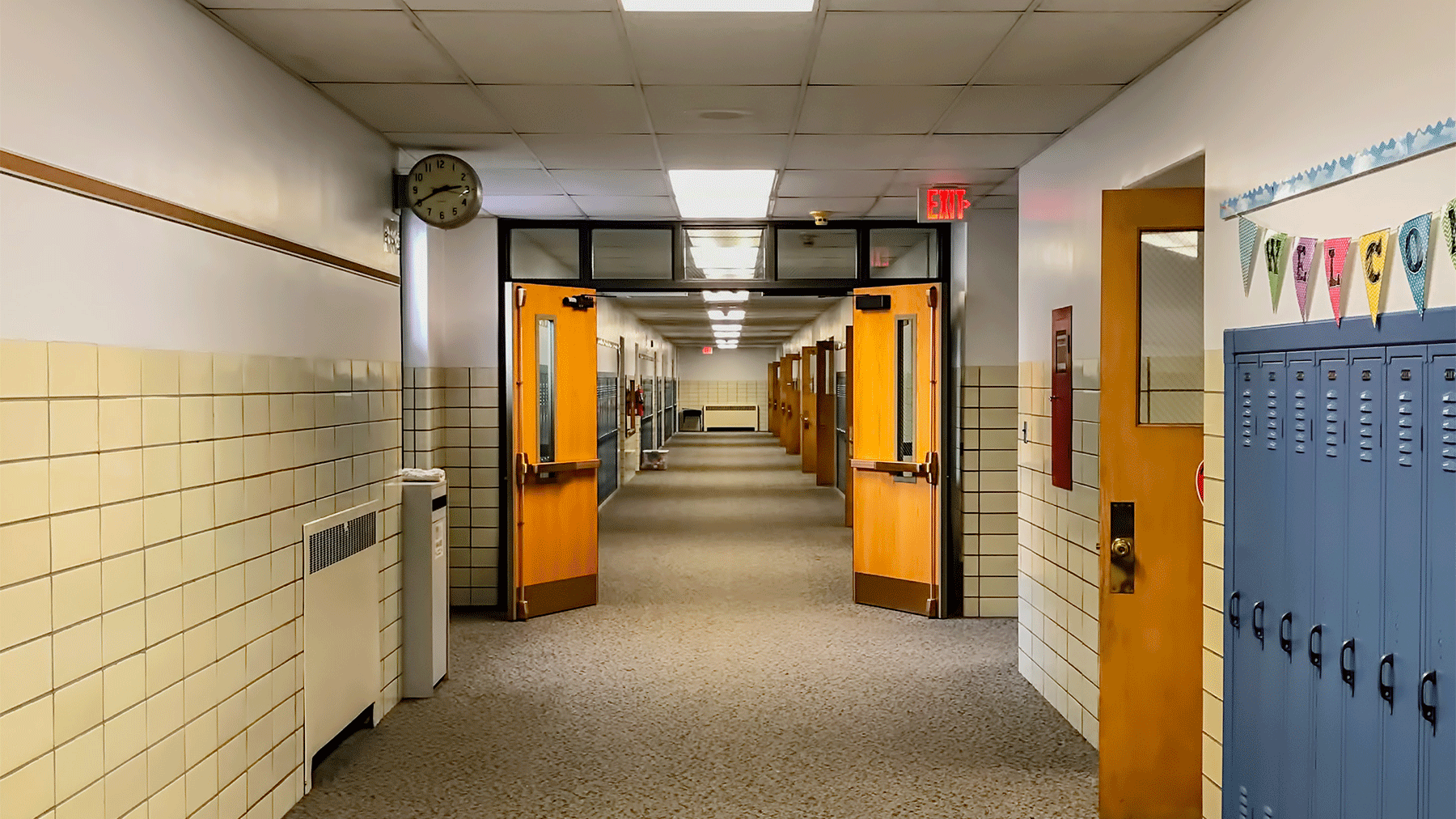When Precious Hughes looked down the long, dark halls of Raines Elementary School in Jackson, Mississippi, she saw lights flickering, water spots staining the ceilings and paint chipping off the walls.
It looked more like a jail than a place where her daughters could receive a good education. “It’s so dark and gloomy and it’s unwelcoming,” she said. “I’ve never been in jail, but it’s like in the movies. The whole atmosphere is so unsettling and so unwelcoming.”
That was three years ago, when Hughes became one of four plaintiffs in a lawsuit filed by the SPLC and its co-counsel against the state of Mississippi for failing to provide a uniform system of public schools that ensures that Black students receive an education equal to that of white students.
Little has changed since then.
But Hughes’ hopes were buoyed earlier this month when a three-judge panel of the U.S. 5th Circuit Court of Appeals reversed a lower court’s decision last year to dismiss the case.
The lawsuit argues that Mississippi has repeatedly violated a nearly 150-year-old, legally binding obligation – enshrined in the state constitution ratified in 1869 – to operate a “uniform system of free public schools” for all children. The year after ratification, Congress passed a law, commonly called the “Readmission Act,” allowing Mississippi to regain full statehood. The Readmission Act requires that the education rights then granted in the state constitution never be diminished.
Despite that obligation, the schools in Mississippi are anything but uniform.
The problems at Raines – where the student body is overwhelmingly Black – underscore deep funding disparities and discrimination against students of color and the school districts in which they attend classes. Not only are the facilities neglected, students often lack textbooks, reading books and basic supplies. Since there are not enough textbooks, the students work from photocopies – when they are available. The teaching staffs, too, are generally less experienced than in nearby schools attended mostly by white students.
When the lawsuit was filed, the children represented in the lawsuit were in kindergarten and first grade in the Jackson Public School District and the Yazoo City Municipal School District, predominantly Black districts that have received an “F” rating in the Mississippi Department of Education’s accountability rankings. Nearby schools with majority-white student bodies have all of the resources lacked by plaintiffs’ schools in failing districts and receive an “A” rating from the state.
The state has since taken over the Yazoo City school district for its academic failures, eliminating its school board and firing its superintendent.
The lawsuit was filed on behalf of the plaintiffs by the SPLC, Jason Zarow, Brad Elias and others at the O’Melveny & Myers law firm, and Rita and Bill Bender of the Skellenger Bender law firm.
‘Welcome news’
“The court’s decision, allowing the case to move forward, is welcome news for families impacted by Mississippi’s violation of the Readmission Act and its establishment of a shockingly unequal public school system that greatly disadvantages Black students,” said Christine Bischoff, senior staff attorney for the SPLC.
“All children deserve equal access to high-quality, well-resourced public schools, regardless of a child’s race or the race of her classmates,” Bischoff said. “For far too long, Mississippi has flouted federal law by subjecting Black children to an education inferior to the education received by white children.”
Though Mississippi’s obligation to operate a “uniform system of free public schools” was enshrined in the education clause of its 1869 constitution, state lawmakers have diluted the clause many times.
The state also has a long history of underfunding education for Black students. A 2019 analysis by the Mississippi Center for Investigative Reporting determined that between 1890 and 1960, white students received over $25 billion more in education spending than Black students.
In 1952, prior to school desegregation, a state legislative committee concluded that “the condition of Mississippi’s schools for [Black children] in rural areas is pathetic, and in some cases it is inexcusable.” Hundreds of Black children, the report said, attended school in “unpainted, unheated and unlighted buildings that are not fit for human habitation and should have been condemned years ago. There are very few rural schools for [Black people] in Mississippi that have sanitary drinking water facilities or sanitary toilet facilities.”
‘I want all schools to be equal’
Almost 70 years after that legislative report, many Black children still attend schools that don’t offer opportunities equal to those afforded to white children in nearby districts.
Dorothy Haymer, another plaintiff in the lawsuit, once spent $100 of her own money to buy sanitary supplies that were lacking at Webster Elementary in the Yazoo City school district, which was taken over by the state last year. In addition to basic supplies such as toilet paper, the school also lacked textbooks, experienced teachers, sports and other extracurricular activities, and tutoring programs.
The state takeover followed an investigation by the Center for Public Integrity finding that none of Mississippi’s school districts with more than 75 percent Black students was rated A or B on the state’s accountability rankings in 2018. The investigation also found that none of the districts with more than 75 percent white students was rated D or F.
“I want all schools to be equal,” said Hughes, the mom who compared her children’s school to a jail. “I want all schools to provide a good education. Everybody should have the same opportunity and the same chance as everybody else no matter what color or what area [they live in].”
Photo by iStock



